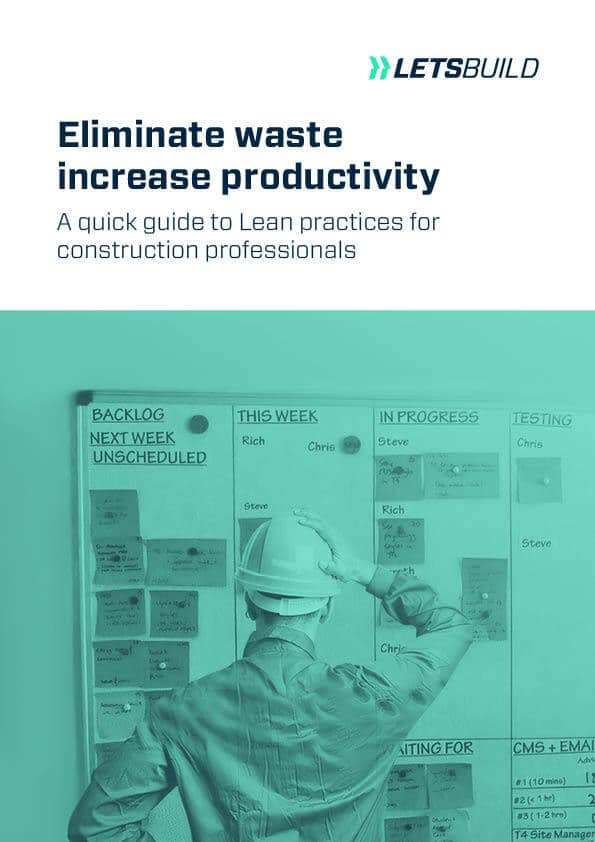Digitisation is changing how the daily construction site works. Over the last few years, digitalisation has disrupted almost every construction process mostly through digital construction project management. As the digital revolution is enabling new construction products and services, it is also designing easier work models and systems for on-site construction professionals.
With the rapidly changing reality and challenges of the daily construction site in this digital era, shifting compliance inspection from a manual process to a digital one would allow for a quicker, more integrated and more effective process.
Having a digital site diary that records all daily construction activities gives you a database of accurate and reliable information to support your compliance checking and overall decision making while providing evidence for any kind of incident.
For a brief but comprehensive low-down on the construction site diary, please follow the link.
Discover the simplest site diary app, LB Site Diary
Construction compliance is a nightmare
The entire lifecycle of a construction project revolves around a collection of regulations, requirements and standards. These vary from contractual conditions and requirements, project brief requisites, and internal or self-imposed environmental performance specifications. Compliance systems usually perform checks according to the following directive types:
- Regulations: these are rules created usually by a legal authority (example: compliance with legislation)
- Requirements: these are necessary conditions for fulfilling a project (example: compliance with requirements as part of a project brief)
- Standards: these are specifications, guidelines or characteristics that can be used consistently to ensure that materials, products, processes and services are fit for their purpose (example: ISO standards).
- Recommendations: suggestions or proposals may be from a legal body or not, and compliance is not compulsory.
Compliance checking against these is an elaborate task that is traditionally, and still mostly, performed manually, making it very resource and labor-intensive.
The past few years have allowed the growth of construction technology, which in turn has enabled meaningful data collection and mature information handling that has now paved the way for the significant adoption of automated compliance checking.
A digital site diary can end your compliance nightmares
The concept of digitised compliance checking can increase your construction efficiency and reduce your construction costs. Including a compliance checking system for regulations, requirements, standards, and recommendations in your daily digital site diary can streamline and integrate a compliant environment within the construction site on a daily basis.
Having your compliance forms digitally and having them within your construction site diary allows a checking system that automates the daily boring overlooked aspects if they meet the regulations, requirements and standards. Your site diary becomes a compliance-checking system in addition to being the backbone of your site reporting. You end up with the capability to automatically check actual site elements against any kind of regulation or requirement.
Your compliance nightmare comes to an end with the following changes thanks to compliance checks in your construction logs:
- The ability to store regulation requirements and standards in a digitised form from which copies and reports can be generated.
- The capability to assist your project manager, compliance supervisor or inspector in decision-making through automatic compliance checks.
- Your site diary will aid your compliance or QHSE officer, project manager, or inspector to manage the overall and daily checking process without automating the actual decision-making.
- Your site diary can provide compliance documentation that allows you to check your building models and the actual building elements against regulatory requirements.
These changes are benefits that will greatly contribute to your building efficiency and in doing away with cost and time overruns.
Related article: Your digital site diary is crucial to your construction site documentation.
Transitioning to a digitised site diary for easily enforced construction compliance
Converting your site diary into a digital one can easily enforce your compliance to any construction regulations, requirements and standards. We have outlined the basic steps that can help you easily transition your site diary into a digital one:
- Define regulations that you can digitise and include in your site diary.
- Standardise data models for compliance by defining required properties and elements in specified regulations.
- Define, improve, standardise, and manage your compliance checking processes that can be integrated to your site diary.
- Define clear links between your requirements, designers, planners, suppliers, contractors, subcontractors and their data.
- Share open standards.
- Establish the government’s stand and direction towards automated compliance checking.
- Calibrate instruments for as-built assets inspections.
- Define your rules and processes in tracking decisions, feedback and risks.
- Verify if your construction log/site diary software is performing exact checking.
- Keep spreading awareness for the digitalisation of regulation, requirements and standards and its benefits.
Your next site diary and compliance steps
The digitisation of your site diary and compliance checking in one platform is crucial in delivering a safer and more efficient construction culture for your projects.
Discover the benefits of digitising your construction site diary by clicking on this link
Compliance with regulations, requirements and standards is imperative in running and managing a construction site. The inability to comply can be costly and can even cause fatal outcomes. The traditional compliance checking processes are costly and time-consuming that leaves a lot of room for errors.
These issues can be tackled by a digitised site diary that is automated to perform compliance checks. Additionally, building a digitised culture one company at a time can slowly but surely establish a standardised construction industry culture and confidence geared towards industry-wide digitalised checking for a compliant- and quality-centred practice that leaves no time and money wasted.



